I would like to discuss something that, in firearms instructing circles, seems to be the metaphorical mutant cousin living under the basement stairs. It’s something that many instructors (and shooters) want to believe doesn’t exist. When it rears its ugly head every now and then, they belittle, blame and condemn, then force the little monster back into the basement and bolt the door. They dare not whisper its name lest it reappear. The hideous beast of which I speak is, of course, the unintentional discharge. OK, so maybe I’m exaggerating a little, but it has always bothered me that instructors spend so little time, relatively speaking, on such an important topic.
After several officers in our metro area experienced unintentional discharges in a short time span, I thought it would be a good topic for a continuing education class. As is usually the case, I casually consulted with other firearms instructors in the area to see what type of curriculum they had and if I could steal any of their information for my class. Surprisingly, most instructors looked perplexed when I asked them about it, like I was breaking some unwritten rule about speaking of the monster under the stairs. The most common reply was, “We tell ‘em to keep their finger off the trigger. If their finger isn’t on the trigger, the gun won’t go off.” Someone would inevitably re-enact the scene from the movie Blackhawk Down, where the Delta soldier puts his index finger up in the air and says, “This is my safety.”
In most cases it’s true that if you keep your finger off the trigger, the gun probably won’t fire, but we know from studying slips, conditioning, and stress responses that, despite what you may think, you are not always in control of your trigger finger. This little fact became more apparent when I found a U.S. Government review of 267 shooting incidents by agents from the FBI, ATF, DEA and U.S. Marshals Service during the period of fiscal years 2000 to 2003. According to the study, a total of 102 (38%) of those shootings were unintentional. If the nation’s brightest and most well-trained officers have such a staggering number of unintentional discharges, then it really is amazing that the rest of us aren’t dropping like flies. All kidding aside, what is apparent is that current training programs are arguably deficient in addressing the matter.
Main Causes of Unintentional Discharges
Most firearms training programs I have been through acknowledge four main causes of the unintentional discharge. They are as follows:
* Disregarding safety rules
* Postural disturbance
* Startle effect
* Maximal exertion of force/sympathetic response
The first item on the list is the blanket that covers the hindquarters of trainers and rangemasters everywhere. This is also where trainers and training programs can, in my opinion, produce the greatest impact. Enforcement of safety rules is a cognitive, empirical function that creates conditioned responses. I would posit that an examination of any unintentional discharge will point to at least one violation of the cardinal safety rules. However, as we have seen, sometimes there can be underlying and unseen causes for those violations.
A postural disturbance is essentially an abrupt loss of balance. It will cause involuntary gross motor skill actions to occur to prevent a fall/injury – one of which is a grabbing motion.
Startle means: To disturb or agitate suddenly as by surprise or alarm; to cause to start involuntarily, by or as by a sudden shock. The startle effect typically causes involuntary gross motor skill reactions similar to the postural disturbance.
In simplistic terms, the sympathetic response is basically one hand doing what the other hand does. Under stress, I grab with my left hand and my right hand will grab also. If there’s a gun in either hand, there is an increased risk of it firing.
Related Causes
In the last few years, we have added four other/related causes of unintentional discharges:
* Contralateral contractions
* Hand confusion
* Trigger reassurance
* Yips
The theory of contralateral contractions was originally credited to Dr. Roger Enoka (circa 1991) and confirmed by subsequent research. What we have come to realize is that the hand gripping a gun is affected by sympathetic reflexive reactions to the movement of not just the hands, but also that of other limbs of the body. These reactions cause uncontrollable contraction of the fingers. It is more than just one hand doing what the other hand does (as was originally thought).
In complex motor skill actions, a large number of muscle groups in different parts of the body necessarily work together, and they do so subconsciously. Studies have shown that jumping motions, whether with both legs or a single leg, cause the greatest contraction of the [trigger] finger. The next greatest [trigger] finger contraction was created by an abrupt loss of balance – a postural disturbance. Third was single-leg kicks, particularly with the weapon-side leg. The postural disturbance is something that happens by accident or surprise, so to minimize the risk of a UD, we practice the “finger off trigger and along the frame” position. Otherwise, if we are running, jumping or kicking, the best thing to do is holster.
Directly related to the phenomena of the sympathetic response and contralateral contractions is the concept of hand confusion. According to studies done by the Force Science Institute, if you have a firearm in one hand and a flashlight in the other, under stress you intend to activate the flashlight but your brain mistakenly sends contraction signals to both hands or to the wrong hand, resulting in an unintentional discharge. The risk increases when hands are crossed, as with the Harries flashlight/weapon technique.
FSI studies have also discovered that there is an apparent psychological need for the reassurance that is afforded by putting one’s finger on the trigger, called simply trigger reassurance. This psychological need is heightened under low-light conditions.
Last on my list is the yip. In all my years of firearms instructing, I had never heard of it until I started looking into causes of the UD. According to the Mayo Clinic, a yip is an “uncontrollable, forceful spasmodic jerk” originally observed in some golfers. It is associated with abnormally high heart rates, and some individuals appear to be more susceptible than others. It appears to be undiagnosable and for the most part cannot be explained. After thinking about it, I realized that a few times I have experienced something like a chill running through my body that caused an uncontrollable twitch of different muscle groups. Under the right circumstances, I can see how such an action might cause a trigger finger contraction, particularly if other safeguards are not in place.
UD Experiment
As an experiment into the effects of conditioning and the causes of unintentional discharges, one year I decided to change the way our department ran annual qualifications. For years we’d used turning targets for qualifications. While we did have training that incorporated movement, decision making, and no-shoot targets, our semiannual qualifications were fairly standard in that during the course of fire, when a target faced, the shooter engaged that target with a predetermined number of rounds.
The aforementioned change was very slight. For certain portions of the course, using silhouette (non-threat) targets, shooters were told to draw and cover their targets when they turned rather than immediately shooting the targets when they turned. The stimulus to shoot the target was an audible command that followed at a random interval. Shooters were told in advance of the change and were reminded of the change prior to the stage of fire. What happened was very interesting.
During daylight qualifications, roughly 10% of shooters committed an unintentional discharge. They fired on the target when it turned just as they had been conditioned. Under low-light conditions, the change required officers to activate their light when targets turned. Again the stimulus to shoot the target was an audible command that followed at a random interval. The percentage of UDs went up slightly during low light. The other interesting observation was that the primary offenders of the daylight UDs were rookie officers, while the primary offenders in low light were veterans. I hope to do more study on this in the future, but the findings are important because any unintentional discharge is one too many. (Prior to the change in the courses of fire, I do not recall any UDs in qualifications over roughly a 12-year period.)
Act Responsibly
It is my contention that as long as you are aware of the many potential causes of an unintentional discharge and accept the fact that no one is immune to the commission of that hideous offense, then in all probability it won’t happen to you. As soon as you become too confident, too arrogant, or just don’t believe in the mutant cousin living under the basement stairs, that is when you are most at risk. Firearms ownership is a solemn and individual responsibility. It is incumbent upon us all to train responsibly, practice responsibly and carry responsibly, so that we are a positive contribution to our families and communities.
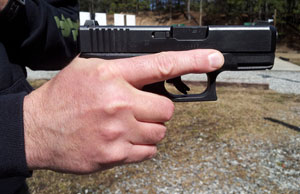

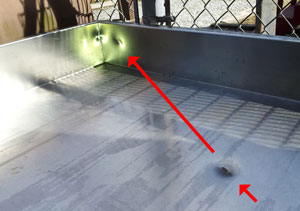
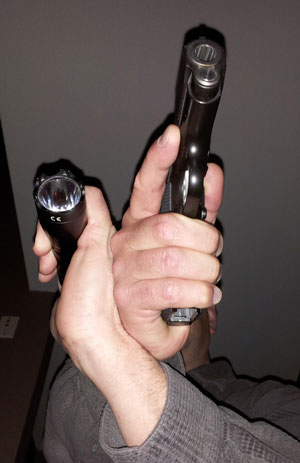
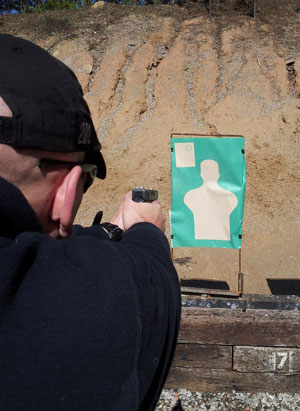
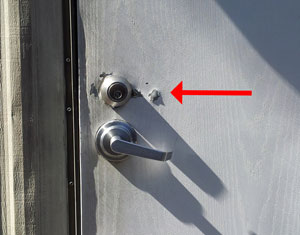

Great article and content. I trained cops for 34 and still train civilians. The reality of the possibility of UDs is generally denied by everyone who has not experienced a UD. I've have observed over these decades UDs on the range when putting officers into more complex drills from even highly trained officers - gratefully, muzzle control was good and there were no injuries. The last time anyone can say, "I'll never have a UD," is only following the last time touching a loaded firearm.
Absolutely excellent information to study and understand. You shouldn't honestly blame an officer for all UD's.
Great article.
Never have had a UD - thank God. And thank you for submitting your findings. This truly is a negative phenomenon for all shooters; but even more so for those who carry for work or self-protection.
It seems to me a large percentage of these unintentional discharges would be avoided by using guns that are double action/single action since the first shot requires a longer trigger pull. Combine that with dropping the hammer when not actively shooting (via the gun's safe hammer drop and I believe almost all unintentional discharges would be avoided.
Good advice. Some other things to consider: I have had an unintentional discharge when a rifle safety failed and jiggled loose. It seems unwise to totally rely on such a mechanical gadget. Shooters who are left eye dominant but right handed have to make an adjustment in their basic grip........in my case this makes it impossible to change my finger position, from inside to outside the trigger, without moving my grip. This means that the basic safety drill has to be modified. Maybe I should have my trigger guard expanded? Finally: For me personally I find there is too much emphasis on speed in self-defense training. My reading of the literature seems to show that there is seldom any need for super-fast weapon handling, and that I do better to train for being careful, deliberate.......and safe. "Speed Kills"..........or certainly distracts.
Another thoughtful article. Many thanks!
Really great information that I never considered, THANK YOU.
I've had two, both on lever-action rifles. The first was when I thought I'd ejected all the rounds and elected to lower the hammer by pulling the trigger. I'd miscounted, and the last round was in the chamber- BANG! The second was when I knew the round was in the chamber and elected to lower the hammer manually and it slipped away from my finger in the process- BANG! Two lessons learned, the first being to check the chamber before lowering the hammer. The second is not to trust my arthritic finger, so my lever guns are the ONLY ones I carry or stage without a round in the chamber, and I never manually lower the hammer on a lever gun anymore.
I had an unintentional discharge two days ago. I was cleaning my AR and had it in the vise. I had removed the takedown pin and had it separated. I realized I didn’t have it on safe so I put it back together and tried to put it on safe it wouldn’t let me. So I pulled the trigger thinking I it was keeping me from switching to safe. The round went off. Through two walls and lodged in the wall on the patio. I’m lucky that I and others are alive. That’s one mistake I won’t make again. It just goes to show that nobody is immune to accidental discharge, no matter how careful you are!